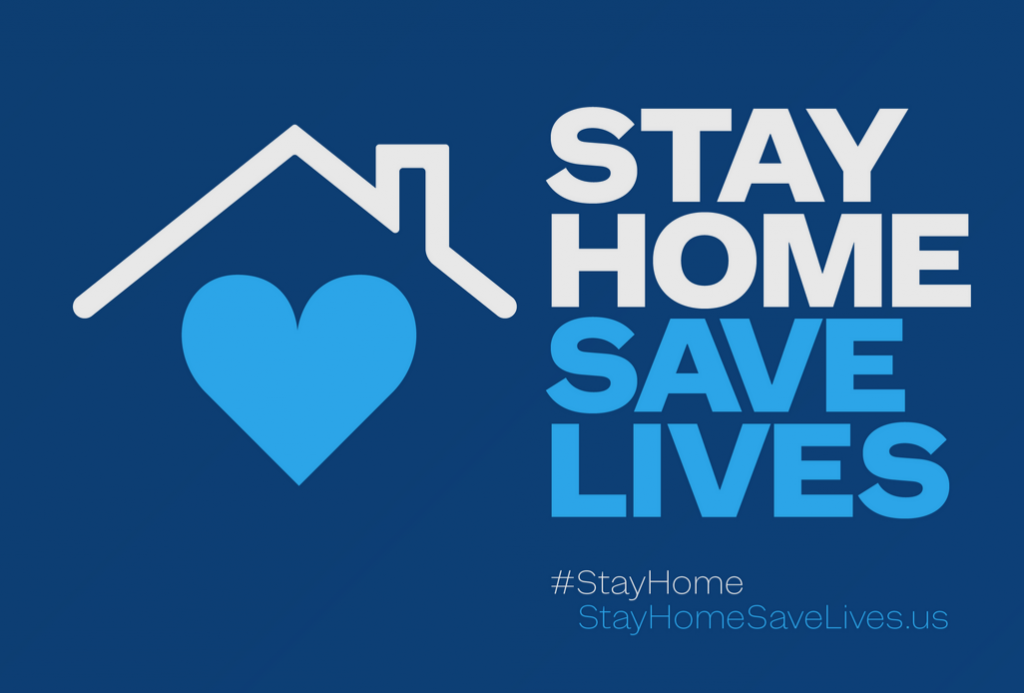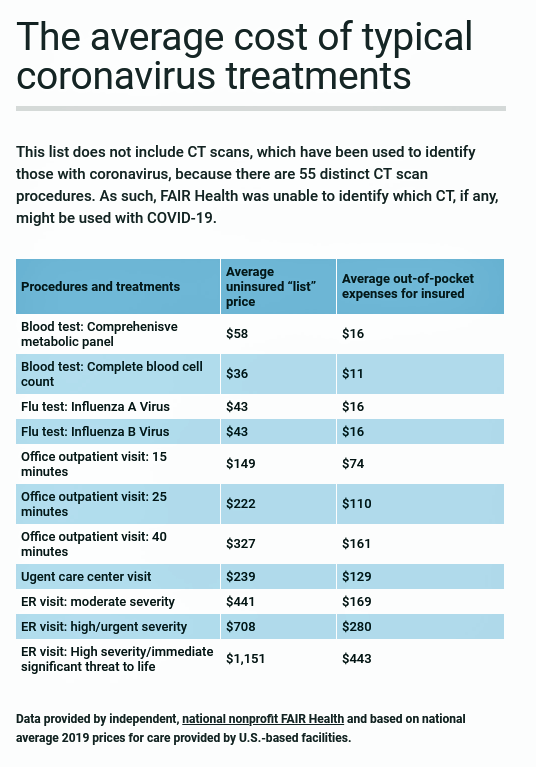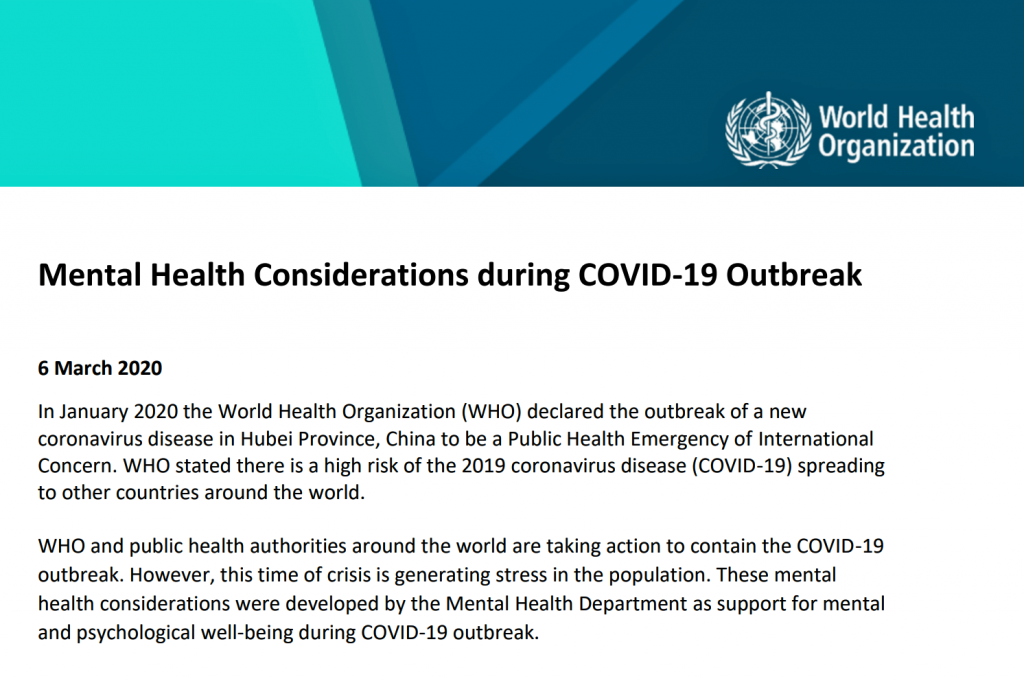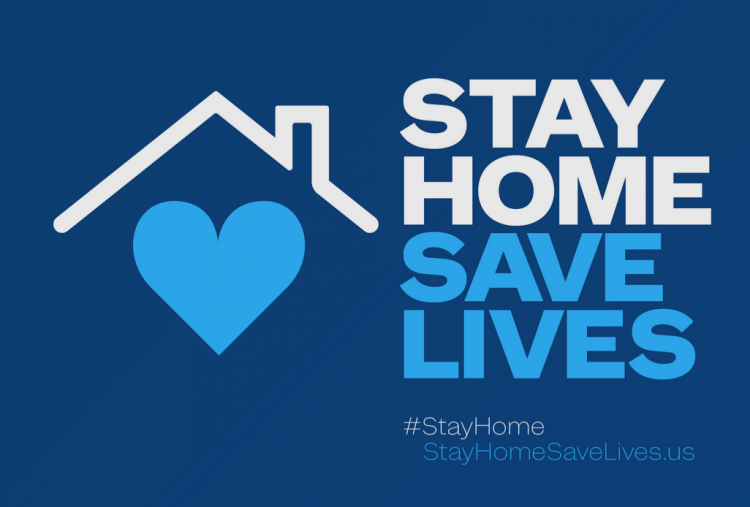 The hashtag #StayHome was ushered onto Twitter by 15 U.S. national healthcare leaders in a USA Today editorial yesterday. The op-ed co-authors included Dr. Eric Topol, Dr. Leana Wen, Dr. Zeke Emanuel, Dr. Jordan Shlain, Dr. Vivek Murthy, Andy Slavitt, and other key healthcare opinion leaders.
The hashtag #StayHome was ushered onto Twitter by 15 U.S. national healthcare leaders in a USA Today editorial yesterday. The op-ed co-authors included Dr. Eric Topol, Dr. Leana Wen, Dr. Zeke Emanuel, Dr. Jordan Shlain, Dr. Vivek Murthy, Andy Slavitt, and other key healthcare opinion leaders.
Some states and regions have already mandated that people stay home; at midnight last night, counties in the Bay Area in California instituted this, and there are tightening rules in my area of greater Philadelphia.
UBS economist Paul Donovan talked about “Lockdown Economics” in his audio commentary today. Paul’s observations resonated with me as I’ve been pondering over the past few days what U.S. communities will be dealing with as more states and regions mandate the closure of non-essential businesses and continued physical distancing.
As people in the U.S. remain home for the immediate term, our home economics blur into their personal health economics in the #COVID19 era in several respects: physically, to be sure; fiscally; and emotionally.
The physical impact of COVID-19 is the first-line requiring quarantine in the #StayHomeSaveLives mode. The son of comic genius Mel Brooks, Max Brooks, created this public service announcement so we #DontBeASpreader of the coronavirus. Watch, enjoy, and learn. Oh, and do spread this video around your own social media channels, especially among younger people, many of whom seem to be congregating on beaches in south Florida and in other public places without attending to social distancing.
 Standard & Poors analysts developed a pandemic-economic model to gauge the potential medical costs in the insured U.S. market. Some key estimates are that:
Standard & Poors analysts developed a pandemic-economic model to gauge the potential medical costs in the insured U.S. market. Some key estimates are that:
- The range of health insurance costs due to COVID-19 would run from $30 billion in the moderate scenario to $50 billion in the “serious coronavirus” pandemic
- The moderate scenario would pressure profits but not lead to a loss for major health plans
- These scenarios are based on 1 million people being hospitalized in the moderate scenario versus up to 8 million inpatients in the serious model
- S&P also assumes that insurers would bear most of the cost-sharing for tests but not for treatment
- Insured Americans’ out-of-pocket costs would range from $3.5 billion in the moderate scenario and up to $16 bn for the serious picture.
The fiscal, personal financial impacts of the Coronavirus are uncertain but will surely be felt by every health citizen in the U.S.
 The impacts will be direct in several ways and across a time continuum: in the immediate and near term, we may bear the burden of health care spending whether we are insured or uninsured; wage hits for hourly workers without paid sick leave, the loss of a job or lack of jobs and projects for workers in the gig economy; and, the downsizing of our retirement savings and investment portfolios as the stock market declines have been dramatic and consequential.
The impacts will be direct in several ways and across a time continuum: in the immediate and near term, we may bear the burden of health care spending whether we are insured or uninsured; wage hits for hourly workers without paid sick leave, the loss of a job or lack of jobs and projects for workers in the gig economy; and, the downsizing of our retirement savings and investment portfolios as the stock market declines have been dramatic and consequential.
On the medical spending front, Bankrate’s survey noted that 1 in 3 Americans did not seek healthcare in the past year due to costs. The immediate concern is that people with symptoms of the pandemic would not seek testing or treatment due to fear of cost. Without assurance that these medical bills would be paid, there are people in the U.S. who still would postpone seeking care due to, as we wonky health economists call the phenomenon, financial toxicity. This is at the root of America’s lack of universal health care as a civil right, a pillar of my call for health citizenship in HealthConsuming.
The emotional aspects of staying put can be isolating, alienating, and exacerbate anxiety and depression. As Paul Donovan of UBS warned in his “Lockdown Economics” alert, the psychological impacts on financial services colleagues working remotely merit attention. He explained that, “Twitter is a super spreader of fear. Fake news is retreated 70% more often than truth. As we move to lockdown this becomes more important: financial markets trade on information and speculation…Fake news on social media appears to be new information which may harness false information in financial markets, in confirmation bias, and in the echo chamber. Behavioral economics suggests that working in isolation at home over an extended period may become less rational and less efficient if they are not careful.”
 For everyone, social distancing could have devastating impacts on people dealing with depression, with the coronavirus sparking mental health concerns in the clinical psychology community. The World Health Organization organized resources for dealing with mental health crises during this pandemic. These recommendations are offered for the general population, health care workers, healthcare managers, caregivers of kids and older people, and people living in isolation. Some of the key advice includes:
For everyone, social distancing could have devastating impacts on people dealing with depression, with the coronavirus sparking mental health concerns in the clinical psychology community. The World Health Organization organized resources for dealing with mental health crises during this pandemic. These recommendations are offered for the general population, health care workers, healthcare managers, caregivers of kids and older people, and people living in isolation. Some of the key advice includes:
- Honoring healthcare workers and caretakers supporting people affected with COVID-19, acknowledging the roles they play to keep loved ones safe
- Don’t refer to people with the disease as “COVID-19 cases,” “victims,” or the “diseased.” These are “people who have COVID-19” and “people recovering from COVID-19”
- Help children find positive ways to express disturbing feelings like fear and sadness — creative outlets, playing, drawing, can help people (young and older!) feel some relief in expressing feelings in a safe and supportive environment
- Stay connected and maintain social networks via email, social media, video chats and phone
- Take breaks away from the constant stream of news about the outbreak — but do stay informed and current.
From WHO to the local-local level, my local news outlet Main Line Today offered a practical list of self-care items to attend to related to social distance impacts for managing our everyday stress, wellness, and emotional health.
My friends in the addiction community have launched virtual meetings along with further developing mobile apps for support and helpful social networking. One friend’s church last Sunday, closed for group communion, had a service organized and led by their pastor by call-in: parishioners dialed in, put phones on mute during responsive readings but still did their prayers aloud and in unison with brothers and sisters in faith. My husband, isolated in Brussels right now, “attended mass” virtually through a Canadian Catholic channel mass-casting online.
 I leave you with a smile and innovation I saw at CES from Procter & Gamble — the super-sized toilet tissue roll from Charmin via robot. At the time, who knew I’d have the opportunity to share this bathroom innovation with you — now, seemingly relevant in the COVID-19 consumer pandemic pantry provisioning era.
I leave you with a smile and innovation I saw at CES from Procter & Gamble — the super-sized toilet tissue roll from Charmin via robot. At the time, who knew I’d have the opportunity to share this bathroom innovation with you — now, seemingly relevant in the COVID-19 consumer pandemic pantry provisioning era.
A great gift could emerge from us through our communal experience with the coronavirus: a great feeling of our community and action toward our collective as Americans and health citizens. As Tom Bossert wrote yesterday on ABC News‘ portal, “If we work together, this terrible moment could be our finest hour.”





 I am so grateful to Tom Lawry for asking me to pen the foreword for his book, Health Care Nation,
I am so grateful to Tom Lawry for asking me to pen the foreword for his book, Health Care Nation,  Thanks to Feedspot for naming this blog, Health Populi, as a
Thanks to Feedspot for naming this blog, Health Populi, as a